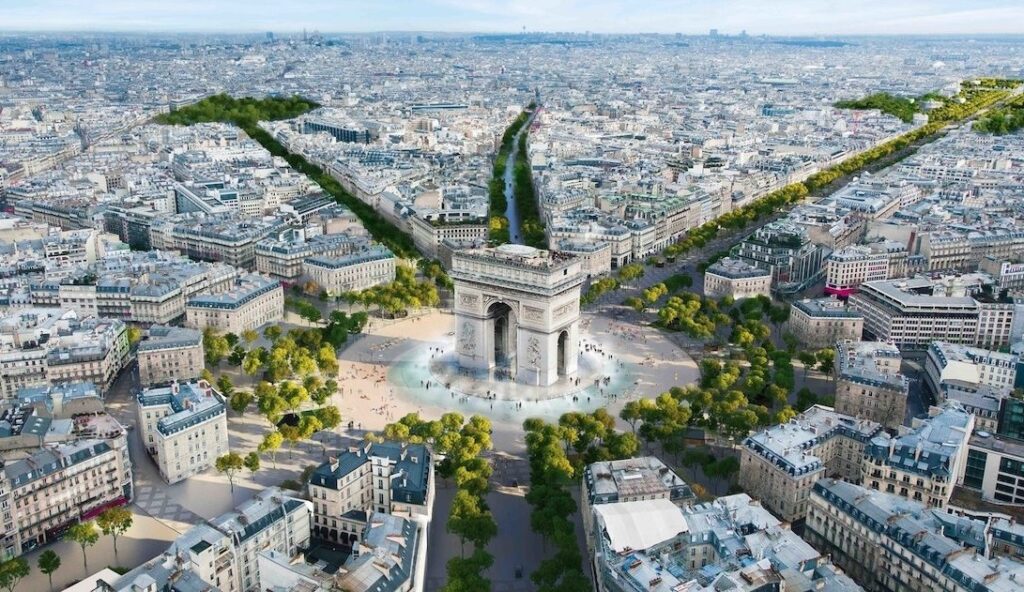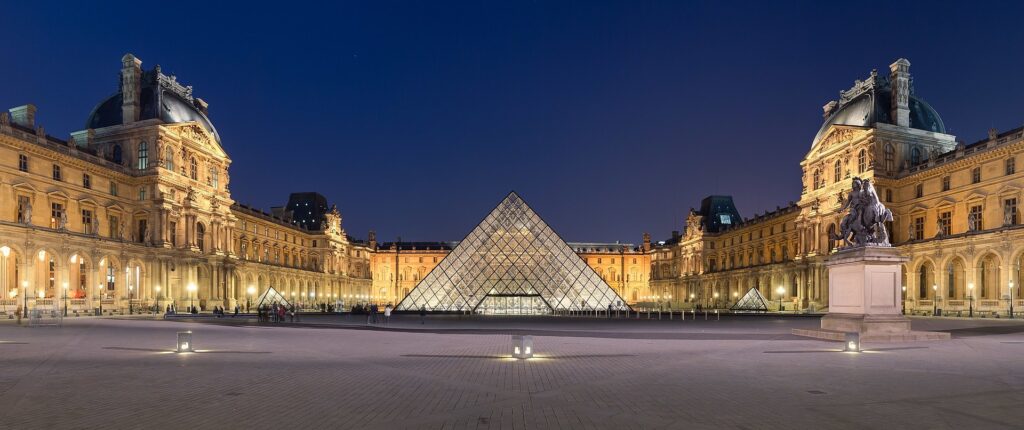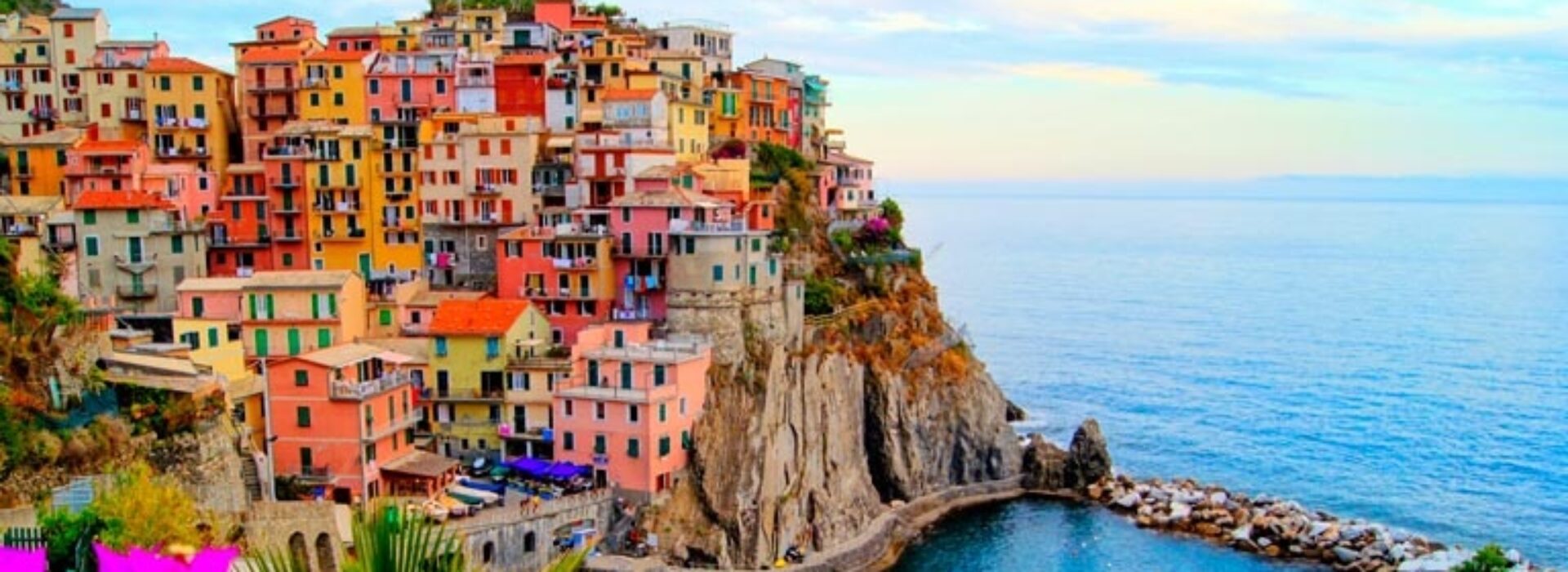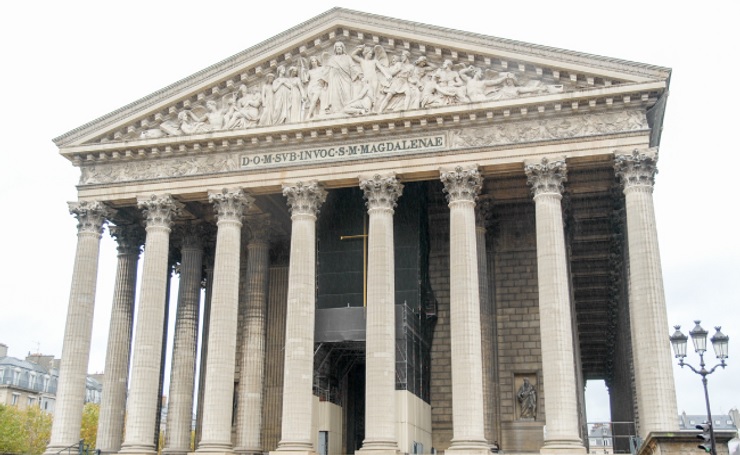Divine Feminine Paris Adventure – March 9 – 13, 2024
5-Days – SOLD OUT
Paris, France’s capital, is a major European city and a global center for art, fashion, gastronomy and culture. Its 19th-century cityscape is crisscrossed by wide boulevards and the River Seine. Paris parks, gardens, street markets, café terraces, and fine chocolates with a dash of romance sprinkled all over it invites to come on this Divine Feminine Parisien Adventure.
Place de la Concorde

Day 1 March 9

 We’ll transfer from Charles De Gaulle Airport to our 4-star hotel & SPA with indoor pool and restaurant.
We’ll transfer from Charles De Gaulle Airport to our 4-star hotel & SPA with indoor pool and restaurant.
Avenue of Champs-Elysees
Our hotel is located near the Place de la Concorde where the Obelisk of Luxor (refer to above) is located at the east end of the Champs-Elysees.
The square was renamed Place de la Concorde, meaning harmony and peace, as a gesture of reconciliation after the turmoil of the revolution.
“Champs-Elysees” is French for the Elysian Fields, the place for dead heroes in Greek mythology. It has been described as the “most beautiful avenue in the whole world”. The Champs-Élysées forms part of the Axe historique. The avenue runs east-west for 1.91 km (1.19 mi) through the 8th arrondissement in northwestern Paris. On the west end is the Place Charles de Gaulle where the Arc de Triomphe is located, built to honor the victories of Napoléon Bonaparte.
Arc de Triomphe

Our hotel is located in the Paris city center close to the east end of the Champs-Élysées and within walking distance to numerous landmarks, i.e., Notre Dame, the Louvre, Palais Garnier, Place Vendome and Jardin des Champs-Élysées, a park which contains the Grand Palais, the Petit Palais, the Théâtre Marigny, and several restaurants, gardens, monuments.
We’ll have the afternoon free to explore, rest up and refresh before we meet our Divine Tour Director and enjoy a delightful get acquinted dinner and celebrate the start of our Divine Parisean Adventure.
Notes: Photos above of the Champs Elysees Cite: Eric Baldwin. “Paris to Turn Champs-Élysées into Expansive Urban Garden” 15 Jan 2021. ArchDaily.
Meal: Celebration Dinner

Day 2 March 10
After breakfast, we’ll walk to Notre Dame Cathedral and on the way we’ll visit the Church La Madeleine.
The Church of Sainte-Marie-Madeleine
The Church of Sainte-Marie-Madeleine or La Magdeleine is a Catholic parish church. It was planned by Louis XV as the focal point of the new Rue Royal, leading to the new Place Louis XV, the present Place de la Concorde.
Napoleon Bonaparte had it redesigned in the Neoclassical style to become a monument to the glory of his armies. After his downfall in 1814 construction as a church resumed, but it was not completed until 1842 and dedicated to Saint Mary Magdeleine, the patron saint of school teachers and a symbol of teaching the Divine Ageless Wisdom and spiritual higher consciousness.
The building is surrounded on all four sides by columns in the Corinthian style. Its fifty-two Corinthian columns, each 20 metres (66 feet) high, surround the building. A structure having rows of classical columns on all four sides, not just on the facade. Notable examples of this structure included the Olympeion, the Temple of Olympian Zeus, the largest temple in ancient Athens, located below the Parthenon, and the much smaller Roman Maison Carrée in Nîmes in France one of the best-preserved of all Roman temples. The Magdeleine is one of the rare large neo-classical buildings to imitate the whole external form of an ancient temple, rather than just the portico front.
The interior is noted for its frescoes on the domed ceiling, and monumental sculpture by François Rude, Charles Marochetti and other prominent 19th-century French artists. The highlight in the center of the church is a mosaic called “Christianity of France” and a statue called “The Ecstacy of Sainte Mary Magdeleine” (refer above). The Divine is present throughout the church, from Angels adoring the Divine Magdeleine to Archangels protecting Her and the church.
Besides Chopin, musicians and artists whose funerals were held at the church include Jacques Offenbach, Charles Gounod, Camille Saint-Saëns, Coco Chanel, Joséphine Baker, Charles Trenet and Johnny Hallyday.Wikipedia
Notre Dame de Paris
We’ll continue on to the famous gothic Notre Dame Cathedral.

Notre-Dame de Paris, meaning “Our Lady of Paris”, is a medieval Catholic cathedral on the Île de la Cité, an island on the Seine river, in the 4th arrondissement of Paris. The cathedral, dedicated to the Divine Mother, is considered one of the finest examples of French Gothic architecture.
The Place Vendôme

We’ll return to our hotel by way of the Place Vendôme which is one of the city’s most famous and beautiful neoclassical squares. Completely surrounded by sober government-looking buildings, it currently houses some of the most famous high-end stores, such as, Dior, Chanel or Cartier. An enormous column (Vendôme Column) was placed at the centre of the square, where the statue of Louis XIV had previously stood. It has a low relief imitating the Emperor Trajan’s triumphant Column in Rome.
It’s the ultimate in opulence and luxury found in Paris.When the square was designed, the façades of all the buildings were built before the actual constructions so that the square would be perfect. The most exclusive jewellery stores, high-end shops and best hotels, including the Ritz and the Vendôme hotels, are found in this impressive square.
Theatre de l’Opera

This is a photos OPS of the Palais Garnier or Opéra Garnier which has been a monument historique of France since 1923. Currently called the Opéra national de Paris, the Paris Opera is the primary opera and ballet company of France and they use the Palais Garnier mainly for ballet. The rest of the day is at your leisure.
In the evening, we’ll gather together at our hotel for our Divine dinner and to share exhillerating conversation.
Meals: Breakfast, Dinner
Day 3 March 11
Montmartre & Sacre Coeur Basilica
 Sacred Heart of Paris
Sacred Heart of Paris
After breakfast we’ll explore more of Paris and discover bakeries and admire the Moulin Rouge and travel to one of the most charming bohemian Paris neighborhoods and formerly the home to artists like Picasso and Dali, Montmartre. The name Montmartre literally means “mountain of martyrs.” It was named such to honor the martyred St. Denis, who also happened to be the first Bishop and the saint patron of Paris.
According to the legend, Saint-Denis and his companions, Rustique and Eleuthère were beheaded there by the Romans.
The hilltop of the famous community of Montmartre is lite up with the Basilica of the Sacred Heart of Paris, commonly known as Sacré-Cœur Basilica and often simply Sacré-Cœur. It’s a Roman Catholic church dedicated to the Sacred Heart of the Christ consiousness. Built by the people of Paris as a political and cultural monument, the basilica is the perfect symbol of both devotion and solidarity.
The rest of the day is at your leisure until our invigorating dinner gathering at our hotel.
Meals: Breakfast, Dinner
Day 3 March 12
Palace of Versailles

After breakfast, we’ll take the train to the opulent Versaille Estate. We’ll then head directly inside with our skip-the-line access and we’ll spend a few hours exploring the palace and grounds.
An audio guide is provided so you can explore the famous palace rooms, including the Hall of Mirrors, at your own pace. Walk from hall to gilded hall, looking at ornately painted ceilings and the private royal quarters. Travel back in time as you discover what life was like living in the splendor of the court of the kings and queens of France.
The Palace of Versailles is a former royal residence located in Versailles. Louis XIV expan ded the château Louis the VIII built. It was a favorite residence for both kings, and in 1682, Louis XIV moved the seat of his court and government to Versailles, making the palace the de facto capital of France. In 1789, Louis XVI and the royal family returned to Paris. For the rest of the French Revolution, the Palace of Versailles was largely abandoned and emptied of its contents, and the population of the surrounding city plummeted.
ded the château Louis the VIII built. It was a favorite residence for both kings, and in 1682, Louis XIV moved the seat of his court and government to Versailles, making the palace the de facto capital of France. In 1789, Louis XVI and the royal family returned to Paris. For the rest of the French Revolution, the Palace of Versailles was largely abandoned and emptied of its contents, and the population of the surrounding city plummeted.
Napoleon Bonaparte, following his takeover of France, used Versailles as a summer residence from 1810 to 1814, but did not restore it. When the French Monarchy was restored, it remained in Paris and it was not until the 1830s that meaningful repairs were made to the palace.
A museum of French history was installed within it, replacing the apartments of the southern wing.
After touring inside the castle we’ll head outside to the manicured gardens and lawns, where a dazzling display of flowers and exotic plants delight visitors of all ages.
We’ll return to our hotel and on the way we’ll spend some time at the Eifel Tower and have dinner.
The latest addition in 2022: +6 meters were gained following the installation of a new antenna dedicated to digital terrestrial radio (DAB+). The Eiffel Tower reached the height of 1,083 feet on March 15, 2022 thanks to this successful and dizzying operation carried out by helicopter.
Meals: Breakfast, Dinner
Day 4 March 13
Louvre Museum

Courtyard of the Museum of Louvre, and its pyramid.




After breakfast, we’ll walk to the Royal Palace gardens with 17th-century arcades of shops & courtyard with striped columns. We’ll have skip-the-line-access to explore Le Louvre (the largest museum in Europe) where you’ll have time to get up close to Venus de Milo and the Mona Lisa.

The Louvre or the Louvre Museum, is the world’s most-visited museum, a central landmark of the city, it is located on the Right Bank of the Seineand a historic landmark in Paris, France. Approximately 38,000 objects from prehistory to the 21st century.
The museum is located on the grounds of the Louvre Palace which Louis XIV left in 1682 and moved his household to the Palace of Versailles. The Louvre became as a place to display the royal collection, including, from 1692, a collection of ancient Greek and Roman sculpture. During the French Revolution, the National Assembly decreed that the Louvre should be used as a museum to display the nation’s masterpieces.
We’ll return to the hotel by way the beautiful square, Place des Vosges. Nestled in the heart of Paris’s chic Marais quarter, this square holds the distinction of being the oldest planned square in the city. During the 17th and 18th centuries, it was considered one of the most fashionable places to live in Paris. You can visit the house of Victor Hugo. The Queen pavilion is at the northern part of the square, and the pavillion of the King is at the southern part. There’s an arcade of shops and nearby restaurants.
Our Grand Finale celebration meal will here and we’ll congratulate ourselve on a successful completion of our Divine Adventure.
Meals: Breakfast, Celebration Meal
Day 5
We’ll travel to the Airport for Transfers Home
Meals: Breakfast

